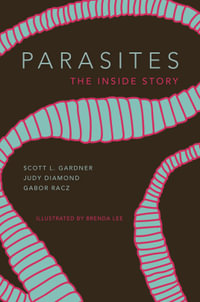From the reviews:
"The text is lucid and wonderfully brief...The techniques described have universal application to bacteriological analyses regardless of one's special interests or focus...a well and necessary addendum for all laboratories engaged in or planning to perform bacterial identifications..." -Quarterly Review of Biology
"...a useful addition to the portfolio of bioscience laboratories" -Microbiology Today
"A very useful book for the bench scientist interested in techniques for differentiating bacterial isolates...should prove useful in a wide range of industrial and academic applications." -Doody's Health Sciences Book Review Journal
"...undoubtedly a useful addition to the series and would be of use to research scientists." -Journal of Clinical Pathology
From the reviews of the second edition:
"This concise volume contains simple introductions to many techniques to supplement the traditional agar plate ... . The text is easy and clear to follow ... . the aim of the book is to provide ideas. The chapters can, therefore, be read for inspiration ... . Step-by-step guide to many of the procedures are included, so those about to embark on a new technique, or even those simply wanting to understand the principles ... will be able to benefit. ... A handy reference ... ." (Dr. J Cargill, acp News, Winter, 2006)
"This very practical volume provides concise, state of the art molecular diagnostic bacteriology protocols for a range of species ... . In my view this book provides a valuable additional source of applied protocols for scientists interested in the detection and differentiation of bacteria ... . I strongly recommend this book for purchase by laboratory-based scientists interested in bacterial detection and differentiation." (David C. Coleman, SGM- Society for General Microbiology, 2007)
"The hard-cover publication in A5 format amounting to 225 pages including a six-page indexcontains 16 chapters ... . The book is thus a valuable aid both for beginning and for experienced laboratory workers. ... Diagnostic Bacteriology Protocols will be used both by experienced molecular biologists for whom it is a source of extending their used techniques, and by beginning specialists with basic knowledge of diagnostic procedures in molecular biology. The uniform and clear treatment offers very good orientation in the flood of ever-emerging facts." (E. Pavlik, Folia Microbiologica, December, 2007)

























